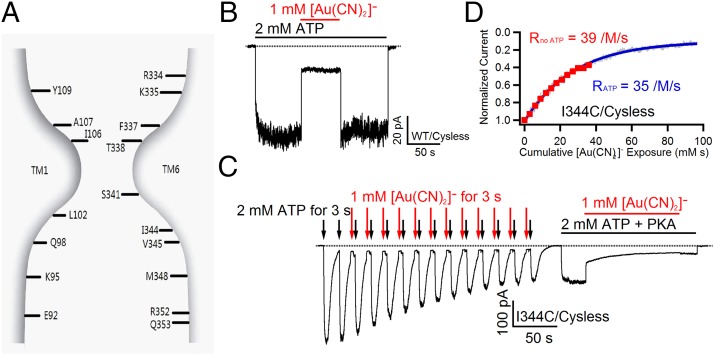Fig. 1.
Current understanding of CFTR’s pore architecture and thiol-specificity of [Au(CN)2]−. (A) A cartoon depicting the essence of the pore of CFTR based on previous cysteine scanning studies (15, 17, 19–21). TM1 and TM6 are shown, as these two segments likely span the entire pore axis. Labeled positions mark the residues that actually contribute to pore-lining. (B) Reversible block of cysless WT-CFTR by 1 mM [Au(CN)2]−. (C) Reaction between I344C–CFTR and 1 mM [Au(CN)2]− in the presence or absence of ATP (see Results for details). Note a two-step current decay when [Au(CN)2]− was applied with ATP. (D) State-independent reactivity of I344C–CFTR to [Au(CN)2]−. Data extracted from C. Red squares represent normalized current amplitudes obtained from the first part of the trace shown in C, where [Au(CN)2]− was applied without ATP, and the gray trace is the second phase (ligand exchange phase) of the current decay, when [Au(CN)2]− was applied in the presence of ATP. Fitting these data with a single exponential function resulted in similar secondary reaction rates.

